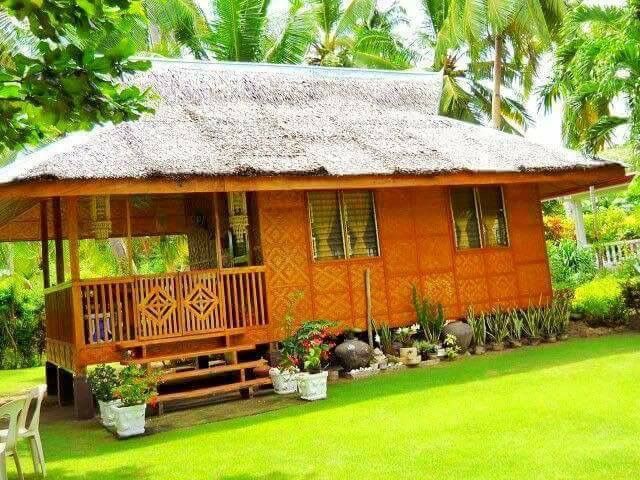The Filipino term báhay kúbo roughly means country house from Tagalog. The term báhay ("house") is derived from Proto-Malayo-Polynesian *balay, "public building" or "community house" while the term kúbo ("hut" or "[one-room] country hut") is from Proto-Malayo-Polynesian *kubu, "field hut [in rice fields]." Nipa hut which is introduced during the Philippines' American colonial era, refers to the nipa or anahaw thatching material often used for the roofs. However, not all bahay kubo used nipa materials.
Bahay kubo is also known as payag or kamalig in other languages of the Philippines. It often serves as an icon of Philippine culture. Its architectural principles gave way to many of Filipino traditional houses and buildings that rose after the pre-colonial era. These include the Colonial era "bahay na bato", which is a noble version of bahay kubo with Spanish and some Chinese main architectural influence and has become the dominant urban architecture in the past. And there is also contemporary buildings such as the Coconut Palace, Sto. Niño Shrine, and the Modernist; Cultural Center of the Philippines and National Arts Center which are Modern edifices that used bahay kubo as a sub influence.
Nipa huts were the native houses of the indigenous people of the Philippines before the Spaniards arrived. They were designed to endure the climate and environment of the Philippines. These structures were temporary, made from plant materials like bamboo. The accessibility of the materials made it easier to rebuild nipa huts when damaged from a storm or earthquake. They are still used today, especially in rural areas. Different architectural designs are present among the ethnolinguistic groups in the country, although all of them are stilt houses, similar to those found in neighboring countries such as Indonesia, Malaysia, and other countries of Southeast Asia.

